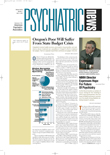Medication errors are among the most common preventable mistakes in health care, according to a 1999 Institute of Medicine report. Experts have estimated that more than one million serious errors related to medication occur annually in hospitals alone.
In an effort to reduce medication errors, the Food and Drug Administration (FDA) proposed two new rules last month as part of the agency’s strategic initiative to curb adverse events related to the products it regulates, according to an HHS press release.
Tommy Thompson, secretary of Health and Human Services, announced the proposed rules last month. “These proposals are key steps in reducing medication problems through state-of-the-art technology,” said Thompson in the press release.
The first rule would require bar codes on all prescription drugs, over-the-counter drugs packaged for hospital use, and vaccines.
Thompson said that bar codes are already widely used in hospitals and other health care settings. The code would at minimum contain the National Drug Code (NDC) number, which identifies the drug, its strength, and dosage form.
The FDA seeks comment on whether to add information such as lot number and expiration date.
“The bar code, when used with a bar code scanner and computerized patient information systems, can prevent many medication errors, including giving the wrong drug to a patient, giving the drug to a patient who is allergic to it, giving the wrong dose or at the wrong time, or using the wrong route of administration, for example, by injection rather than by mouth,” said Thompson in the release.
Thompson also announced a second FDA proposed rule designed to revamp the safety reporting requirements for medications. The rule would require companies that produce medications to submit to the FDA, within 15 calendar days, all reports they receive of actual and “near-miss” medication errors in the United Sates, according to the press release.
One example of a “near-miss” is when a pharmacist selects the wrong medication because of a similar sounding name but catches the error prior to dispensing the medication.” The company would be required to report the potential error to the FDA if the pharmacist reported to the company what happened, according to the release.
The proposal is also intended to promote uniform reporting standards among regulatory agencies in the United States and abroad.
In addition, the proposal would require the submission of all suspected serious reactions for blood and blood products on the market.
The proposal clarifies the kind of data needed in various safety reports to “lessen industry’s reporting burdens especially for certain suspected adverse reactions that are not serious. Companies can focus on producing high-quality reports for serious suspected adverse reactions, which potentially have a much greater public health impact,” said Thompson in the release.
Fact sheets on both proposed rules and other related materials are posted on the FDA Web site at www.fda.gov/oc/initiatives/barcode-sadr. The public can submit comments on the proposed barcode rule until June 14 and on the safety reporting requirements until July 14 (90 and 120 days respectively from the March 14 publication in the Federal Register). Comments can be submitted online by accessing www.accessdata.fda.gov/scripts/oc/dockets/comments/commentdocket.cfm and clicking on “02N-0204—Bar Code Label Requirements for Human Drug Products” and “00N-1484—Safety Reporting Requirements for Human Drug and Biological Products.” Written comments on both proposed rules should be submitted by the same deadlines to the Dockets Management Branch (HFA-305), Food and Drug Administration, 5630 Fishers Lane, Room 1061, Rockville, Md. 20852. ▪
